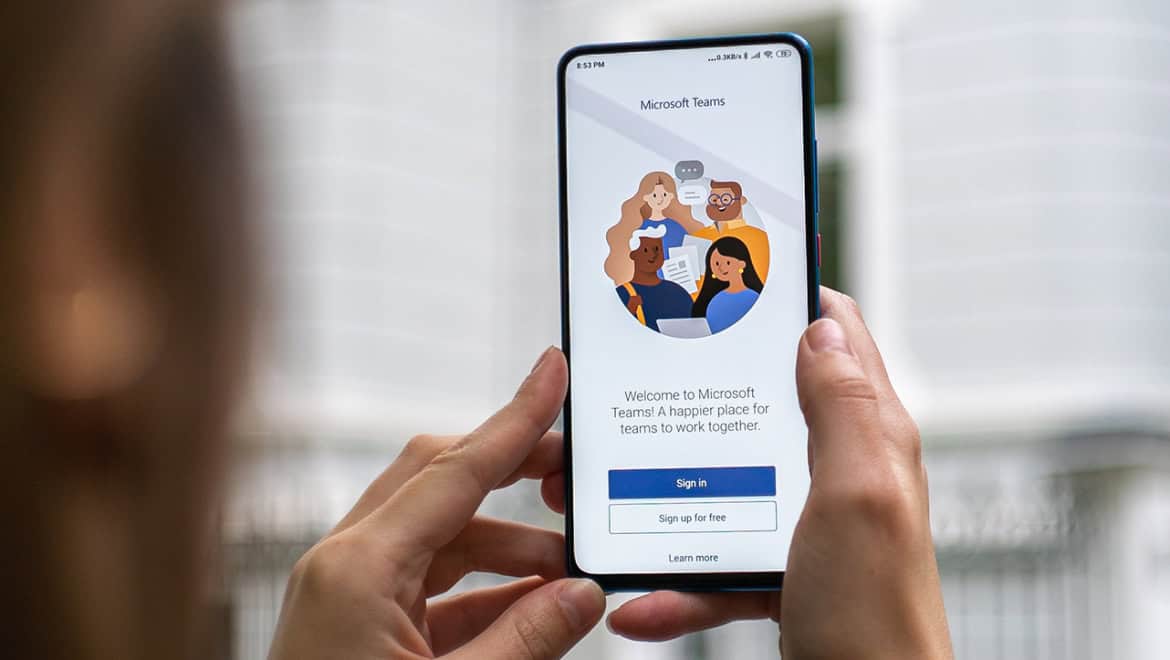The Future of Microsoft Teams
With an incredible 250 million monthly active users, and a rapidly growing community of fans, Microsoft Teams has changed the way we work forever. What started as a simple alternative to Skype for Business has now emerged as a hub for virtual teamwork and innovation.
Teams is redefining collaboration as we know it.
Though Microsoft’s UCaaS solution has been gaining attention for some time in the digital landscape, it’s become particularly popular since the pandemic in 2020. When lockdown hit for the first time, companies needed a user-friendly space where employees could share ideas and maintain a strong connection. Teams answered the call for a new digital workplace.
Today, the MS Teams environment combines everything from video conferencing and presentations to content sharing. You can even add your own business phone lines via direct routing and operator connect. So, what’s next?
Looking to the Future for Microsoft Teams: Calling
The Microsoft Teams landscape is constantly changing, updating, and improving to suit an increasingly active hybrid and remote workforce. When companies started to embrace the idea of a workplace without a specific physical location, the concept of “voice” in Teams emerged. While Microsoft had its own Business voice solution, it often lacks the extensive technology business leaders need. Fortunately, Microsoft responded to this issue.
With Direct Routing and other tools like Operator Connect, companies can leverage solutions like Resonate’s Voice for Teams to enable PSTN calling in Teams. Voice for Teams even allows users to access secure, reliable tools for Contact Centre, recording and monitoring interactions.
In October 2021, Microsoft announced a new expansion to the Microsoft calling plans, so companies can now access connections across a total of 33 markets. Aside from allowing you to bring your own calling functionality to Teams, Microsoft also makes it easy to access the right hardware for better communication too.
Microsoft certified and approved hardware solutions range from Jabra headsets to Poly all-in-one meeting room bars, and more. You can even create your own comprehensive Microsoft Teams Rooms too, for the ultimate Teams meeting.
Hybrid Teams and Future Meetings
Microsoft believes the future of the workplace is in hybrid work. Around 83% of respondents in an Accenture study agree, saying a “hybrid work” model would help them achieve the highest levels of productivity in a post-pandemic world.
To enable this hybrid workforce, Microsoft is upgrading the meeting experience in a host of ways. For meetings, Microsoft has even announced a commitment to making meeting rooms more intelligent, with tools like smart cameras which can track the position of a person in a room and recreate the feeling of eye contact between remote and in-office staff.
Microsoft Teams also enables secure recording functionality, so they can record important information for people who couldn’t be there. This technology has been particularly crucial among educational groups, who needed to record classes for students.
To make everyone feel more engaged in meetings, Microsoft introduced shared whiteboards, where every attendee could make notes and sketch ideas in real-time. Plus, a live transcript available for unscheduled and calendar meetings ensures it’s easy to search through information and find the details you need for follow-up action items.
Over the last couple of years, Microsoft has even improved the way teams manage their meetings, with Breakout Rooms and organization options allowing business leaders to assign specific people to crucial groups whenever necessary. Plus, new “Presentation” options, like Microsoft Presenter mode allow people to position themselves in a meeting environment in a way best-suited to content sharing.
One major focus for Microsoft in the current landscape has been the implementation of intelligence tools. AI in the collaborative landscape allows users to access “suggested replies” so they can respond to messages quickly or start recordings automatically as soon as a conversation begins on video.
You can even automatically adjust microphone sensitivity to spend less time fussing with your audio settings during the meeting itself.
Improved Employee Experiences
Perhaps the most essential recurring theme in the Microsoft Teams landscape is the introduction of tools designed to improve the employee experience. Every time the system updates, it brings in more tools to make life easier for employees, wherever they might be.
Over the last few months, Microsoft even introduced the incredible “Viva” environment, where companies can access a wider range of tools for employee engagement and wellbeing. Viva brings together knowledge, learning, resources, and even personal statistics to help them track their working flow. On top of that, Microsoft Teams is now growing increasingly customizable, with new features like personalized notifications for staff members.
Management also gets extra benefits from the Teams experience, such as the option to export Teams lists from the Teams admin centre, and track workplace performance. There are even dedicated tools in Teams for specific groups, like frontline workers who need to stay active and engaged on the move with a Microsoft Teams app.
Looking into the Future
Microsoft Teams is evolving rapidly, like the rest of the Microsoft environment. During the Ignite Event in 2021, the CEO of Microsoft, Satya Nadella noted that the future of Teams might even include access to VR goggles, which allow people to step into shared meeting environments in a brand-new way. Microsoft also announced the arrival of “Mesh”, an environment where developers can build collaborative experiences for mixed and virtual reality.
The future of Microsoft Teams could easily give way to endless new innovations in artificial intelligence, extended reality, and even connected devices. Imagine being able to control aspects of your technology through your Teams app, regardless of where you are or being able to build virtual versions of a product with team members.
Of course, before any company can begin to discover the future of Microsoft Teams for themselves, they first need to adopt the present technology as it stands today. Resonate can help with this, offering a full range of change and adoption services to advise you on the best possible ways of setting up Teams within your business.
Get started
We offer a set of two accelerator packs on “Getting Started with Teams” and “Embedding Teams into the Business” to help SMBs recognize the value of the platform as quickly as possible.
Our wealth of experience in enabling businesses to fully adopt Teams to help drive efficiency and manage workload migration will ensure you achieve the best possible ROI from the platform. It should also provide you with all the encouragement you need to retire legacy systems like Skype for Business Online and embrace new cutting-edge solutions like Teams. Get in touch to find out more.





